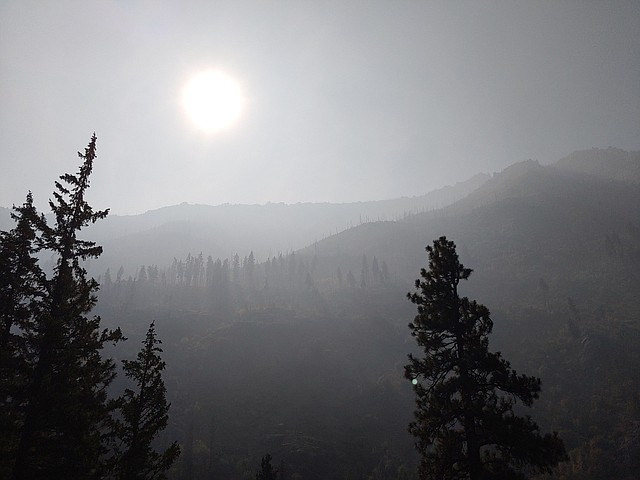Last month, something chilling happened in the wildfire community. A burn boss — the person who oversees prescribed burns on public lands — was arrested after the fire he was overseeing jumped the fire line and moved onto private property.
A prescribed burn is a managed fire designed to burn up fuel on the ground that, if left as is, could lead to a larger uncontrollable fire. Fires are a natural part of the ecosystem, and fire suppression to protect lumber over the last century has allowed small fuel — essentially kindling — to stack up on the forest floor. When you sprinkle in longer dry seasons due to anthropogenic climate change, and you add bark beetles that kill trees, you have the perfect recipe for a mega-fire. Prescribed burns can help mitigate that.
In this case, a team was managing a prescribed fire in central Oregon’s Malheur National Forest. When the fire moved off the forest, across a road and onto private land, the team managed to bring it back under control in less than an hour — well before it could damage any structures.
But that didn’t matter.
Rick Snodgrass, the burn boss and individual with the highest level of firefighting skill, was arrested by Grant County Sheriff Todd McKinley while Snodgrass and his team were actively fighting the fire, in what appeared to be a wildly irresponsible move. He was charged with reckless burning, a Class A misdemeanor. If found guilty, this charge has a maximum penalty of a year in jail and a $6,250 fine.
Guilt or innocence in this particular case may rest on whether the team was negligent or not in the way they conducted the burn. At the time of this writing, the Sheriff’s Department had not publicly laid out any type of metric that they might use to determine liability.
Regardless of whether a case is built around this or it’s dropped, the fact that a firefighter working to increase the safety and security of a community was arrested is problematic. It means burn bosses need to not only worry about the life and limb of their crews but also whether or not they will be held individually accountable if something unexpected happens; something as simple as the wind shifting, for example.
It is rare for fire managers to lose control of a prescribed burn. Indeed, statistically, there is one escape for every 1,000 fires, and most are like this one — they are contained quickly. This is because fire teams plan these events long in advance and take everything into account, from the time of year and forecasted rain events, to humidity and the direction and speed of the wind. They are very careful in what they do.
 Wildfire Smoke fills Leavenworth’s Icicle Valley in October from the Bolt Creek Fire. (Photo by Jason D. Martin)
Wildfire Smoke fills Leavenworth’s Icicle Valley in October from the Bolt Creek Fire. (Photo by Jason D. Martin)
Many communities are on edge, though. People get understandably angry when teams are unable to manage a fire they started. In April, two prescribed burns that escaped containment in New Mexico merged, creating the largest wildfire in the state’s history. The fire burned 340,000 acres, destroyed more than 500 homes and displaced thousands of people.
When it became clear the fire was out of control, the Forest Service temporarily halted all prescribed burns to review their policies.
In September, the Hermits Peak-Calf Canyon Fire Assistance Act was passed through Congress. The bill provides $2.5 billion in assistance to those who lost homes and business revenue due to the fire in New Mexico. While this is a reasonable government response, it doesn’t mean people are OK with the suffering and trauma that came with such a disaster.
But here’s the problem: Forests have become a tinder box. If the New Mexico fires started for any reason other than a prescribed burn, there is a strong likelihood the same thing would have happened anyway. In Oregon, while the crew may have lost control for a short period of time, the work they did likely made the adjacent private property more secure from a natural wildfire.
In an era of longer and dryer seasons — an era of mega-fires — it is imperative those who manage prescribed burns are given the leeway to do this without fear of personal liability. These are hard, dangerous and poorly paid jobs. The last thing fire managers need while dealing with a fire is to be put in handcuffs.
We have done a poor job with forest management for a long time. Fixing this is not easy, and there is risk involved.
One thing, however, is certain: There is a lot more risk in doing nothing at all.
Jason Martin’s outdoors column appears monthly. Email: jason@alpineinstitute.com. Twitter: @OutdoorPolitics.




